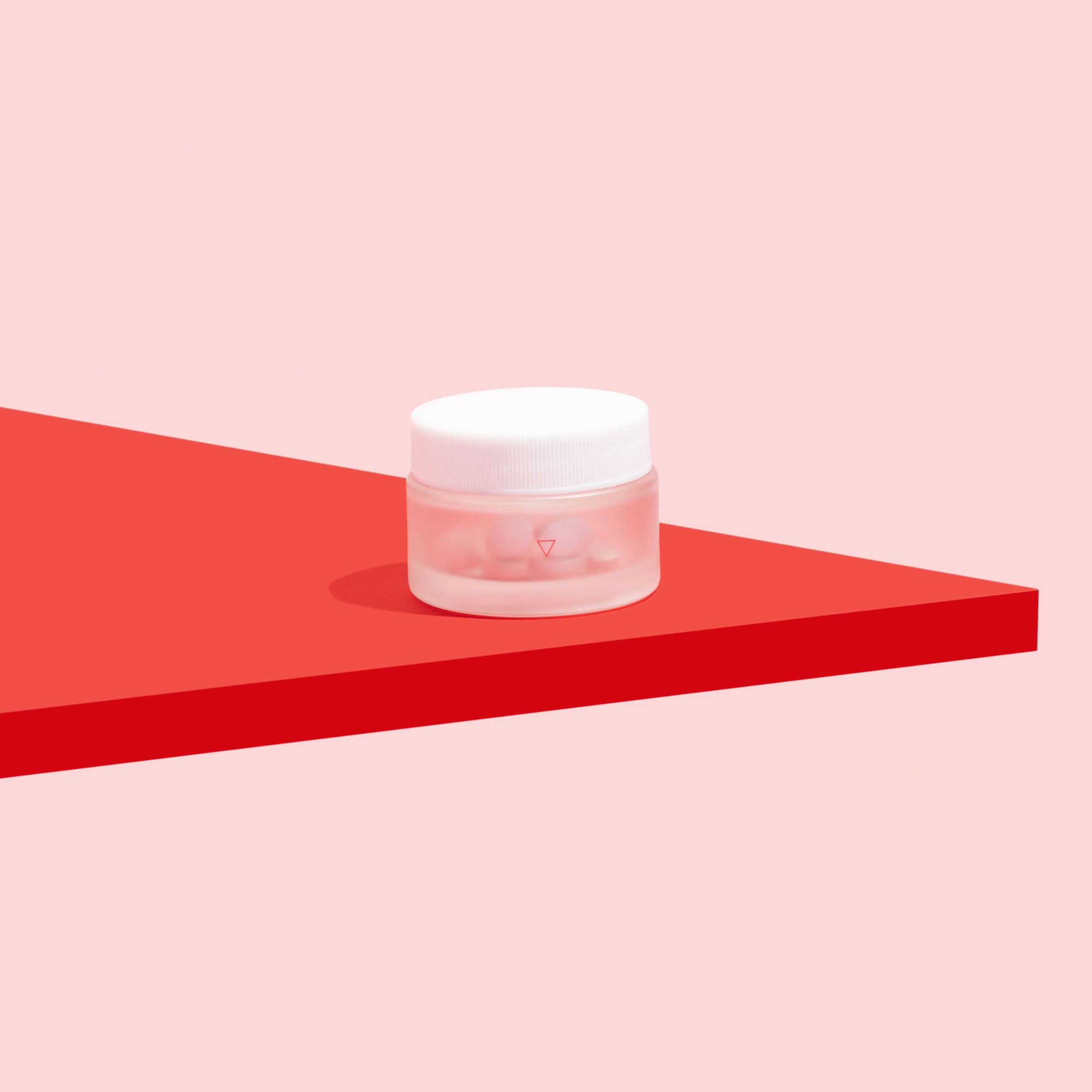
Are Yeast Infections
Contagious?
Published on August 6, 2020
Updated on May 19, 2025
Written by Kathleen Morrison
Medically Reviewed by Andrea Sleeth WHNP-BC, MSCP
Yeast infections are pretty common, and one question that often pops up is whether they’re contagious. Here’s the scoop: yeast infections aren’t contagious in the same way a cold or the flu is. It's caused by an overgrowth of Candida, a type of fungus that naturally lives in your body. It’s totally normal to have it around – until it starts to get a little too comfy.
However, in some cases, vaginal yeast infections can be passed between partners during intimate contact because the fungus can be transferred from person to person. Don’t worry, though—this is super uncommon and typically only happens if one of you is on certain types of medications, or has a weakened immune system. Still, it’s important to know.
Staying on top of your hygiene and maintaining a healthy lifestyle are two easy ways to support your body and help keep things in balance. A little awareness goes a long way, so if you or your partner feels off, it’s always smart to chat about it.
What does it mean for a Yeast Infection to be contagious?
When we say a yeast infection might be “contagious,” we’re talking about the Candida fungus causing the infection, which can spread from one person to another through direct contact.
But here’s the key: yeast infections aren’t considered sexually transmitted infections (STIs), even though sexual activity can sometimes lead to the fungus passing between partners.
So, no need to stress about "catching" a yeast infection like you would a cold or the flu. But just like with anything, it’s always good to be aware of how vaginal infections work and what you can do to keep everything in check.
Common signs to watch for include itching, thick white discharge, and general vaginal irritation. And if you’re unsure about what’s going on, our Symptoms Quiz is a great way to figure out your next steps.
Can you get a Yeast Infection from someone else?
Short answer: Yep, it’s possible!
Don’t stress—it’s pretty unlikely that it’ll happen. But just so you’re well-informed (‘cos we want you to be), here are all the details on how it can happen and what you can do about it.
Here’s how yeast infections can spread:
-
Skin-to-skin contact: Yeast infections are most commonly spread through direct contact, especially in warm, moist areas of the body. Activities like:
- Sexual intercourse
- Oral sex
- Close genital contact
-
Shared damp personal items: While it’s less common, the fungus can be passed through items like:
- Unwashed towels
- Damp clothes
- Anything that stays moist after coming into contact with infected skin
And here are some other important things to remember:
- It’s not an STI: Yeast infections aren’t classified as sexually transmitted infections (STIs) because the Candida fungus is already present in most people’s bodies. It only becomes a problem when there’s an overgrowth.
- Sexual activity can increase risk: Having sex with someone who has a yeast infection increases your chance of developing one too. The friction and heat can cause little tears or irritation, which makes it easier for the fungus to take hold.
- Oral sex: Yeast infections can also be passed through oral sex if one partner has Candida in their mouth (aka thrush) or genitals.
- Sex in a bath, pool or hot tub: Water, especially hot water, can make it easier for the yeast to travel from you to your partner or vice versa during sex.
- No need to worry about toilets or baths: Yeast infections are not typically spread by shared bath water or toilet seats. The fungus needs a warm, moist environment to thrive and doesn’t survive on cool, dry surfaces.
Are Yeast Infections contagious for men and children?
Yeast infections can affect people of all ages and genders, but some groups might be a little more prone to them. Let’s break it down and see how they can spread and what to do about it!
For adults:
- Sexual partners: Yeast infections can sometimes be passed between sexual partners, especially during vaginal or genital contact. The Candida fungus that causes yeast infections can easily move from one person to another.
- Keep communication open: If you think you or your partner might have a yeast infection, it’s helpful to talk about it and both take steps to clear it up—this could include using prescription antifungal treatments, practicing good hygiene, and maybe taking a break from sex until things are back to normal.
- It’s not always a big deal: Yeast infections aren’t usually something to worry about, but they can occasionally be passed between partners.
For babies:
- Oral thrush: This one’s quite common in babies and looks like white patches inside the mouth (on the tongue, gums, or cheeks). It can be uncomfortable and make feeding difficult, and it’s something moms can pass to their babies during delivery or through breastfeeding if there’s a yeast infection going on.
- Diaper rash: When bacteria and yeast cause a diaper rash, it looks like red, raised patches and can sometimes have little bumps around it. The warm, damp environment of a diaper can make it easier for yeast to grow.
- Treating thrush and diaper rash: If your little one has any of these symptoms, it’s a good idea to chat with your doctor. They’ll help you figure out the best treatment, like prescription antifungal creams or medications to clear it up.
For breastfeeding moms:
- Nipple infections: Yeast can also make its way to your nipples while breastfeeding. You might notice painful, itchy, or burning sensations on the nipple or areola, and sometimes there are white patches too. If you have a yeast infection, it can also pass back and forth between mom and baby, so getting treated is key.
- What to do: If you think you have a yeast infection while breastfeeding, don’t wait to get help. Your doctor will likely recommend a prescription antifungal treatment for you and possibly something for your baby, too.
How long are Yeast Infections contagious for?
Good news: yeast infections are usually only contagious when symptoms are active.
Once you start on a prescription antifungal treatment, you’ll likely see improvement in a few days. During this time, it's best to avoid sexual activity or close contact that could spread the infection.
Most yeast infections clear up within a week, but make sure to finish your full course of prescription medication, even if you feel better sooner. This can help keep the infection from coming back.
If your symptoms stick around or worsen after a few days, don’t hesitate to reach out to your healthcare provider for advice!
How to avoid spreading or catching a Yeast Infection
While yeast infections can spread, there are simple steps you can take to keep things in check.
Here’s how to keep yourself and your partner happy and healthy:
- Keep it clean and dry: Gently clean the genital area and wipe front to back. Moisture can be a yeast infection’s best friend, so keep things dry.
- Go breathable: Opt for loose, cotton underwear and clothes that let your skin breathe. Skip the tight, synthetic fabrics that trap moisture.
- Change out of wet clothes: Whether you're at the gym, just got out of the pool, or caught in the rain, change out of wet clothes and swimsuits ASAP to avoid creating a damp environment.
- Use protection: If either you or your partner has a yeast infection, condoms or dental dams can help keep things from spreading.
- No douching: Your vagina is amazing at cleaning itself! Douching messes with its natural balance and can invite yeast infections. Just don’t go there.
- Avoid scented products: Skip scented tampons, pads, and sprays. These can irritate the delicate skin around the vulva and increase the chance of infection.
- Boost your immunity: A healthy body is your best defense. Eat well, sleep enough, and manage stress to keep your immune system strong.
It’s all about feeling good and staying in control of your health. Stay comfy, stay informed, and you’ve got this!
Can I Get a Yeast Infection From Swimming?
Yes, we did mention changing out of your wet swimsuit after a dip, but that's not because you're at risk of contracting someone else's yeast infection from the pool, ocean, or lake. Remember, we also mentioned that yeast loves moisture. Well, you know what it loves more than just dampness by itself? Moisture and warmth. The longer you leave that warm, wet bathing suit on, the more time yeast has to develop and leave you feeling itchy and uncomfortable. Once again, though, a yeast infection is very unlikely to actually spread through water, whether hot or cold, without sexual contact.
When to see a doctor
Some yeast infections can be handled with over-the-counter treatments, but there are times when it’s best to check in with a healthcare provider for prescription antifungals. If any of these sound familiar, it's time to book an appointment:
- Symptoms don’t improve: If you've tried self-care and things aren’t getting better after a few days, it’s a good idea to reach out to a doctor.
- Frequent infections: If you’ve had four or more yeast infections in a year, it’s time to dig deeper with a healthcare professional about your chronic yeast infections.
- Severe symptoms: If you're dealing with lots of redness, swelling, or sores, it’s worth getting checked out.
- Weakened immune system: If you have a condition like diabetes or HIV, or anything that affects your immune system, seeing a doctor can help.
- Pregnancy or breastfeeding: Yeast infections can act a little differently during pregnancy or while breastfeeding, so it’s always smart to consult with your healthcare provider.
Your doctor can help confirm that it’s a yeast infection and suggest the best treatment. They’ll also rule out other possible causes like bacterial vaginosis or an STI.
Taking the best possible care of your intimate health
Yeast infections can be a pain (to put it lightly), but the good news is that they're totally manageable. By understanding how they spread and staying proactive about your intimate health, you can stay in control and keep things feeling balanced.
If you do find yourself dealing with one, there are plenty of treatment options, from over-the-counter remedies to prescription meds. The key? Acting quickly and sticking with your treatment until it's fully cleared up. This helps keep the infection from hanging around or coming back.
Remember, you’ve got this, and Wisp’s got your back. Whether you’re dealing with a yeast infection or just want to make sure you’re staying on top of your intimate health, we’re here to help—just a click away.
Frequently Asked Questions (FAQ):
Can yeast infection spread from person to person?
Yep, they can—especially through sexual contact—but it’s not super common, and yeast infections aren’t classified as STIs. Still, it’s always a good idea to tune into your body (and your partner’s!) and chat openly about anything that feels off.
Can a guy catch a yeast infection from a woman?
They sure can! While it doesn’t happen all the time, folks with penises can get a yeast infection after sexual contact. If something feels uncomfortable or itchy, it’s worth checking in with a provider for both peace of mind and the right care.
Why do I keep giving my girlfriend a yeast infection?
That recurring issue could be from a few things, including reinfection, certain medications, or other health conditions you're dealing with. If it feels like a pattern, it’s smart for both of you to check in with a provider. No shame, no blame—just teamwork.
Will my boyfriend get a yeast infection from me?
It’s totally possible, even though it doesn’t happen super often. Open communication, good hygiene habits, and a willingness to get things checked out together? That’s the dream team.
This blog post is for informational and educational purposes only and should not be taken as professional advice. Always consult with a qualified professional before making any decisions based on the information provided here.

Diflucan, Generic Fluconazole (Yeast Antifungals)
Prescription antifungals used to treat vaginal yeast infections
Starting at $45.00
Get Started
Vaginal Health Consult
Private, online vaginal health consultation.
One Time Consult $45.00
Get Started

